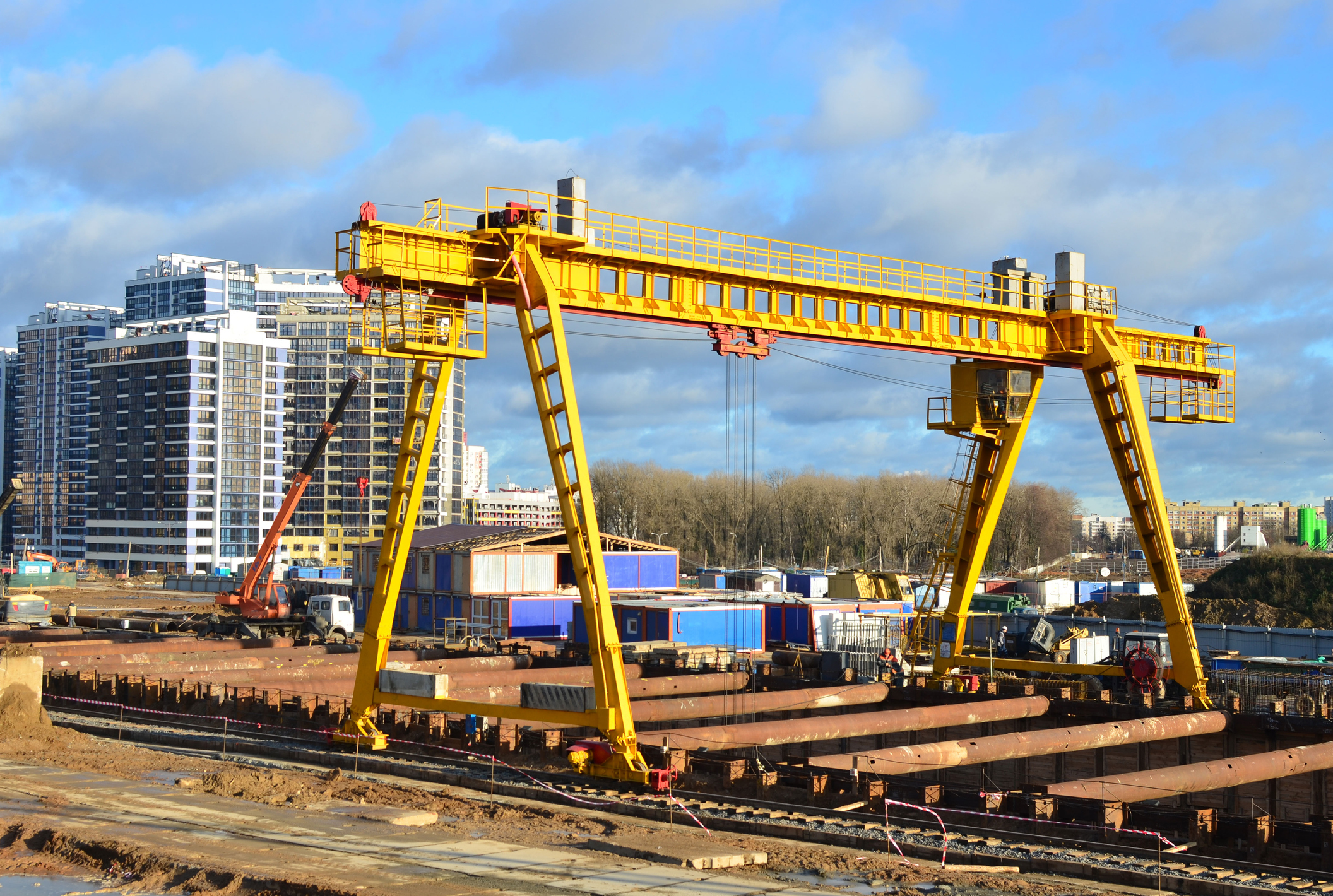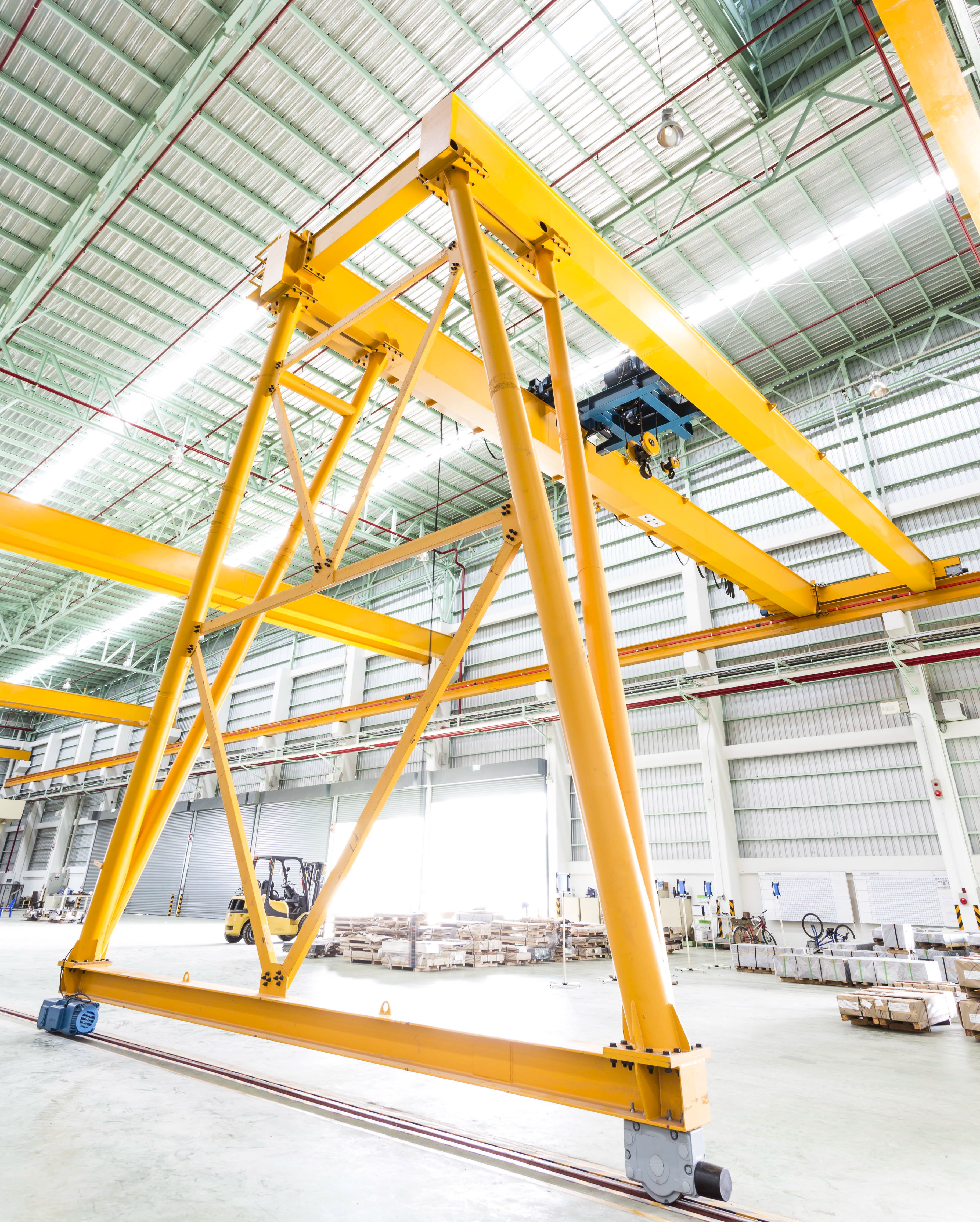Friday 9th June 2023

A gantry crane is a type of overhead crane that is typically used in manufacturing facilities, construction sites, and other industrial settings to lift and move heavy objects. Unlike other types of cranes, a gantry crane is supported by a structure that runs along rails on the ground, rather than being suspended from the ceiling.
Gantry cranes can range in size from small portable units that can be moved from one location to another, to large fixed systems that are capable of lifting several tons of weight. They are commonly used to move heavy machinery, containers, and other large objects in factories, warehouses, and shipping yards.
How a Gantry Crane System is Set up?
A Gantry Crane System typically consists of several key components that need to be assembled to set it up properly. The exact setup process may vary depending on the specific type of gantry crane and its application, but below are the main steps that are required:
- Foundation: The first step is to prepare the foundation for the gantry crane. This involves ensuring that the ground is level, stable, and can support the weight of the crane.
- Gantry frame: The gantry frame is the main structure that supports the crane. It typically consists of two upright beams and a crossbeam that connect them. The frame is assembled on the foundation using bolts or welding.
- Trolley: The trolley is the part of the crane that carries the load. It typically runs on rails mounted on the crossbeam of the gantry frame. The trolley is usually assembled and mounted onto the rails before being attached to the hoist.
- Hoist: The hoist is the component that lifts and lowers the load. It is usually mounted on the trolley and can be electrically or manually operated.
- Electrical components: Depending on the type of gantry crane, there may be additional electrical components such as limit switches, control panels, and power cables that need to be installed.
- Testing: Once the gantry crane is assembled, it needs to be tested to ensure that it is functioning properly and safely. This typically involves testing the hoist, trolley, and electrical components to ensure that they are all working correctly.
Commissioning
of a Gantry Crane System
After the set up of the system, the next is commissioning of the Gantry Crane. Basically commissioning is a process of testing and verifying that the crane is working correctly and is safe to use. This involves testing the crane's functions, such as lifting and lowering loads, moving the trolley along the rails, and stopping the crane in an emergency. It also involves testing the electrical components to ensure that they are functioning correctly, and verifying that the crane meets all safety regulations and standards.
Process of commissioning of a Gantry Crane System
The process involves a series of detailed tests and inspections that are designed to ensure that the system is safe, reliable, and operating correctly. Following are the steps tha a crane engineer will generally follow during this process:
- Electrical testing: Engineers will test the electrical components of the gantry crane system, including the motors, sensors, and control systems, to ensure that they are functioning properly and safely.
- Load testing: Load testing involves lifting a specified load with the gantry crane system to verify that the crane can safely handle the rated load capacity.
- Performance testing: Engineers will test the performance of the gantry crane system, including the speed and accuracy of the hoist and trolley movements, to ensure that the system is operating efficiently.
- Safety checks: Engineers will verify that all safety features and devices on the gantry crane system are working correctly, including limit switches, emergency stop buttons, and overload protection systems.
- Documentation: During commissioning, engineers will prepare detailed documentation of all tests and inspections, as well as any necessary adjustments or repairs. This documentation is important for future maintenance and troubleshooting of the gantry crane system.
- Training: Engineers may also provide training to operators and maintenance personnel on the safe and efficient operation of the gantry crane system, including any specific procedures or protocols that are required.

Different Types of Gantry Crane systems:
- Single girder gantry crane: This type of gantry crane has one bridge girder that spans the gap between two legs or supports. It is commonly used in manufacturing facilities and warehouses for lifting and moving light to medium-sized loads.
- Double girder gantry crane: This type of gantry crane has two bridge girders that run parallel to each other and are supported by legs or columns. Double girder gantry cranes are used for heavier loads and larger spans, and are commonly found in construction sites, shipyards, and steel mills.
- Portable gantry crane: This type of gantry crane is designed to be lightweight and easy to move, making it ideal for temporary or mobile applications. Portable gantry cranes are commonly used in workshops, maintenance facilities, and construction sites.
- Semi-gantry crane: This type of crane has one end supported by a leg or column, while the other end travels on a rail or runway. Semi-gantry cranes are used in situations where only one side of the crane needs to be supported, such as loading and unloading of ships or trucks.
- Full gantry crane: This type of crane is fully supported on both sides by legs or columns, and is used for heavy-duty lifting and moving operations such as in shipyards or in the construction of large buildings and bridges.



